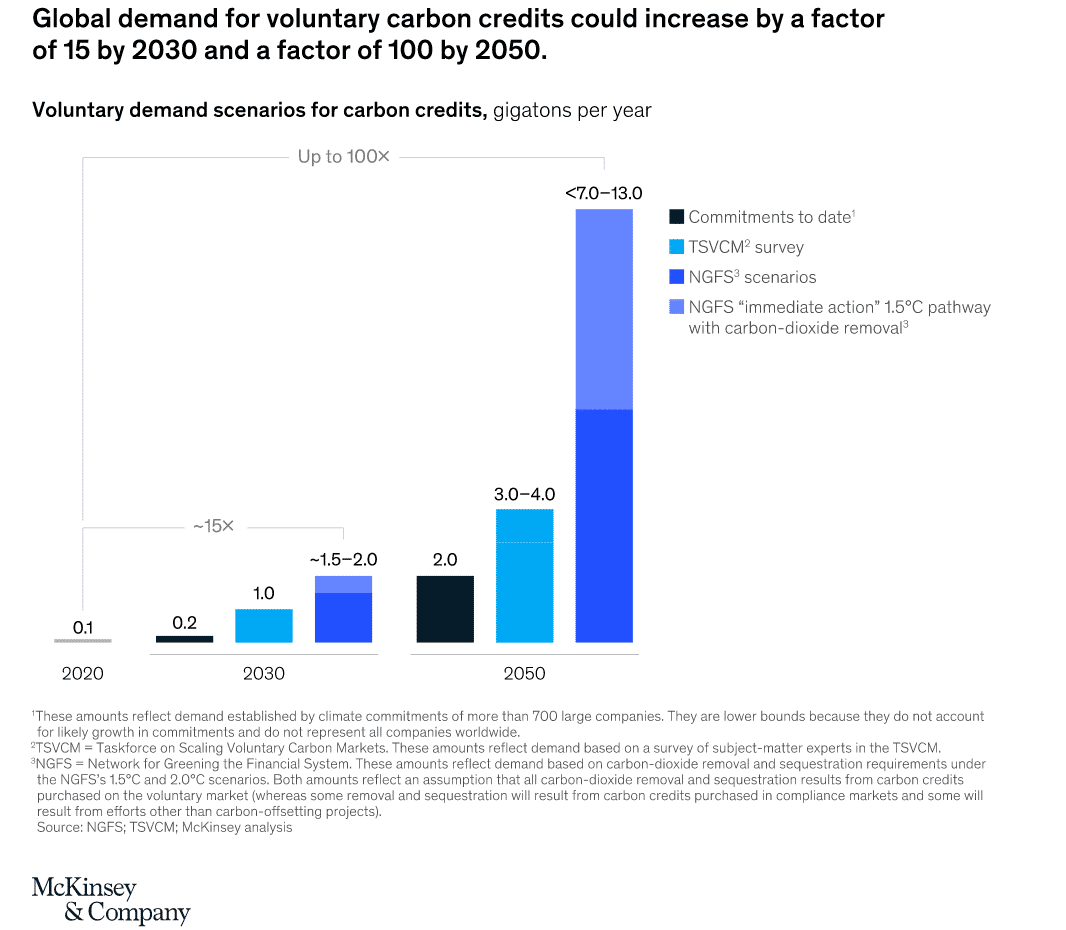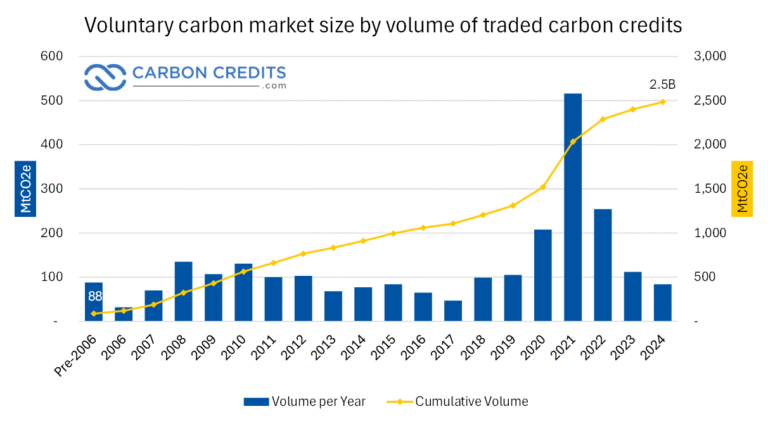Now that Larry "Tokenized Inc." Fink is interim co-chair of the World Economic Forum, let us take a look at where some of this stuff is going.
From CarbonCredits.com, July 2/3:
S&P Global and JPMorgan’s blockchain division, Kinexys, launched a pilot to tokenize carbon credits. They aim to use blockchain and smart contracts to improve voluntary carbon markets (VCMs), make them more transparent, trustworthy, and liquid.
Their initiative is important because the global carbon credit market is worth about $933 billion in 2025, and can grow to over $16 trillion by 2034. This move could unlock major climate finance opportunities by tackling key issues that have held the market back.
From Blocks to Credits: The Digital Carbon Evolution
The voluntary carbon credit market is worth about $4.04 billion in 2024. It could grow to $24 billion by 2030 with an annual growth rate over 35%. However, this market has many flaws. Multiple registries make it hard to compare credits.

Transparency issues continue to raise concerns about fraud and double-counting—when the same carbon credit gets sold or claimed more than once—in carbon markets. Ghost credits, which are fake reductions, hurt market integrity. Overstated impact claims and double-counting also damage investor confidence, as shown in the chart below.

Estimates show that in 2021, hundreds of millions of tonnes of CO₂ equivalent credits faced issues. As the market grows, this number could rise significantly. To improve transparency, organizations are using blockchain tracking and better verification. These efforts aim to cut risks as the VCM grows. By 2030, analysts expect trade around 1.5 billion tonnes of CO₂ equivalent.
Low liquidity turns off big investors. Plus, no central exchange or standard contracts splits the market. This limits growth and makes it hard for institutions to join in.
These weaknesses undermine trust and prevent big capital from entering the market. By tokenizing credits, S&P and JPMorgan aim to fix these problems and transform carbon credits into reliable digital assets.
How Tokenization Changes the Game
The joint pilot combines the Environmental Registry from S&P Global Commodity Insights with JPMorgan’s Kinexys blockchain platform. Together, they can turn carbon credits into digital tokens. These tokens are stored on an unchangeable ledger that everyone can access.This system performs the following:
- Standardizes credits across different projects—such as reforestation or direct air capture—to make them comparable.
- It ensures transparency by permanently logging the issuance, transfers, and retirement of each credit. This helps tackle fraud and double-counting issues that have affected the market.
- Enables smart contracts that automate tasks. For example, credits retire when purchased, which cuts transaction times from months to minutes.
- Enables cross-chain transfers, which lets tokens move smoothly between platforms and registries. It boosts interoperability and market depth....
....MUCH MORE
When Vlad Tenev was quoted as saying ""Robinhood's CEO on the Plan to Tokenize Everything" (HOOD)"he probably wasn't thinking of tokenized water but that is coming too.
It's all a quieter, more whiz-bangy take on this from 2022:
Big Money Financial Engineering: Saving The Planet By Securitizing EarthThis is happening right now and if you want in on the action you have to know the game is being played....
Six months later we saw: "Securitize The Earth: Oil Trader Mercuria Creates A "Nature-Based" Investment Platform"
And another six months to: "Forget Carbon Credits, It's Time For Biodiversity Credits, Come Get You Some"